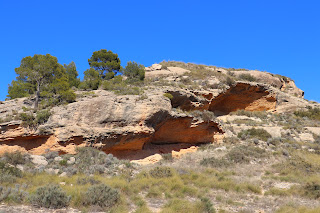The photos were in focus, the viewpoint was safe and I was able to talk to a family from Llano de Brujas who were leaning on the same wall But after about ten horses had run past I thought I'd have a bit of a wander and see if I could get some nice, safe, snaps of the horses as they arrived at the top of the hill. It was the first time I'd done that. Interesting. Injured horse handlers, crying horse handlers, girlfriends greeting their hero horse handlers. The horses looked happier too now that nobody was poking them with a stick and demanding that they run through a red and white coloured mob of shouting people. My personal favourite chant was "It smells of armpits here" - it did.
I had seen enough horses and decided to leave so I had no option but to join the throng of people on the slope as the only route to get to the signed emergency exit, the way back to my parked car. It wasn't so easy pushing my way through hundreds and hundreds of boozed and drugged up young people enjoying themselves with just a tad of danger to spice it up a bit. In fact I found myself caught up in this ebb and flow of bodies long enough for about five horses to pass. I have to be honest, I was glad when I reached the way out. I thought I might be there for the whole event. Some of those snaps with the bits of horse showing above the mass of red and white are in focus.
The Caballos del Vino, the Wine Horses, is something that happens every 2nd May in Caravaca de la Cruz. There are about 70 groups, peñas, and each one has a horse that takes part in three contests over the three days. The 2nd May is the big day though. Like baguettes and dry stone walling this event too is Intangible Cultural Heritage. The story goes that the Castle/Church in Caravaca was under siege by the Muslims, the Moors, in the middle of the 13th Century. Caravaca is called Caravaca de la Cruz because the church there has a piece of the "One True Cross". Not letting the Muslims get their hands on such an important Christian relic was considered to be top priority. The defenders had emptied their water cisterns so a group of Knights Templar decided to run the siege and take them something to drink. They couldn't find any water (!) so they loaded their steeds with wine skins and charged, bat out of hell like, up the slope taking the besiegers by surprise. They made it into the castle and the defenders, being well pleased to have a bit of something to slake their thirst, decorated the horses with flowers and suchlike.
The 2nd of May celebrations are dedicated to the One True Cross. Before the horses start running there is a floral offering taken to the church. Then it's the popular bit. The horses, wearing incredibly intricate embroidered mantles, start from a flat spot below the castle and run up a slope to the castle gates. The horses have four handlers, two on each side, and it's a simple time trial to run from the start to the finish. The starter says such and such horse can run, the four handlers try to get into position before they cross the start line and then horse and handlers run up the hill, it takes a few seconds. Caballo en carrera, racing horse, is the warning to the crowd. If you don't heed the warning four blokes and a horse may trample you to death. If the handlers arrive at the finish line still attached to the horse then the run is valid. Keeping up with the horse can't be easy especially as there are several hundred, possibly several thousand, people in the way who have to move to one side to let the horses pass.
Caravaca is pretty lively on the second of May.
Lots of pictures in the May album









.png)













